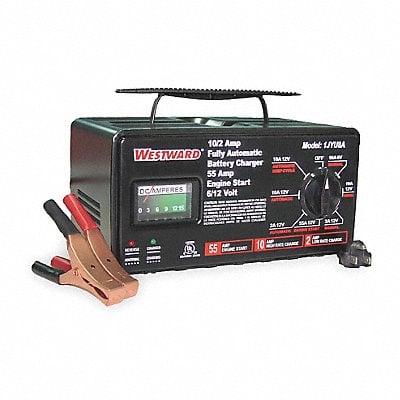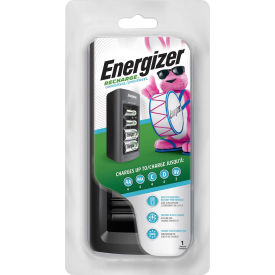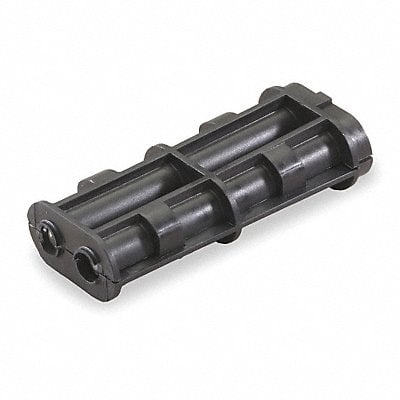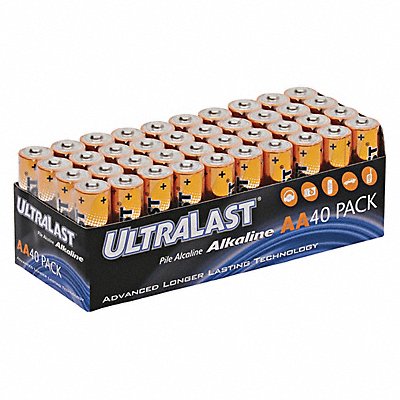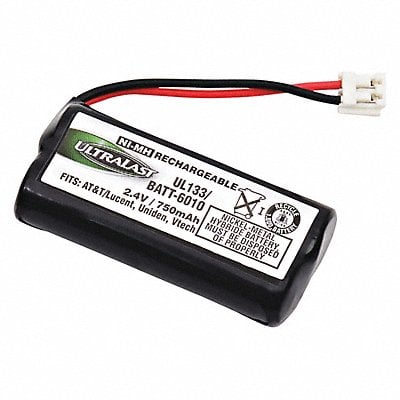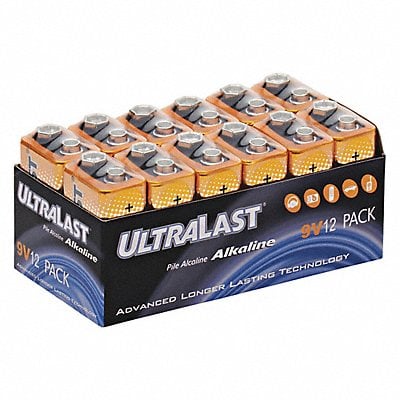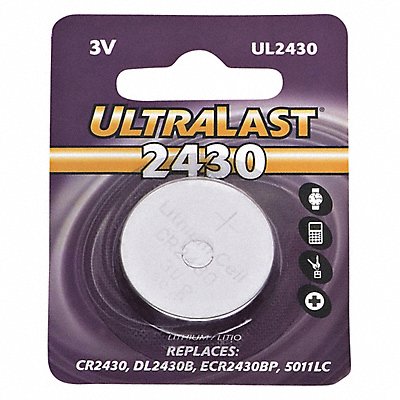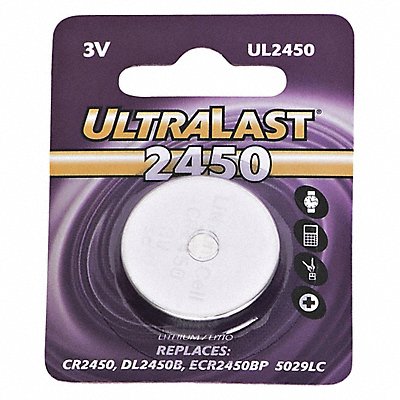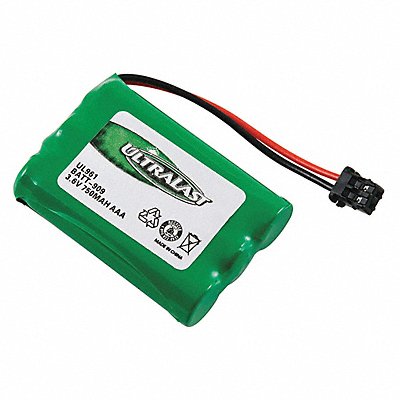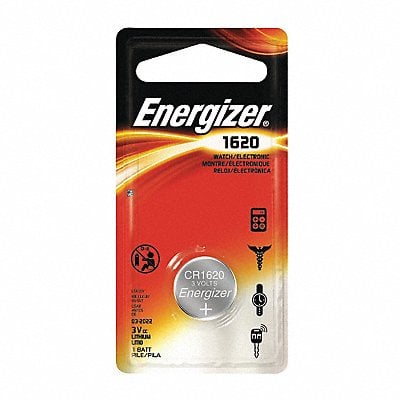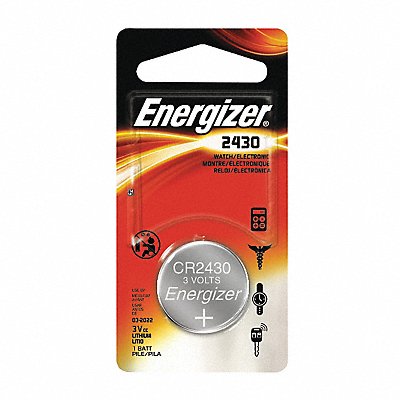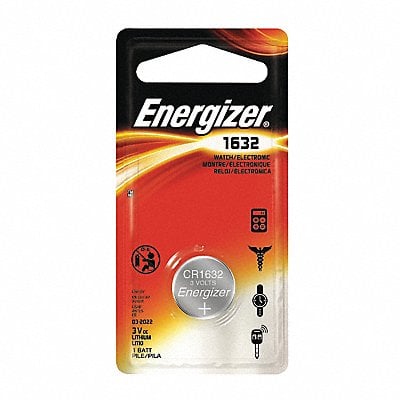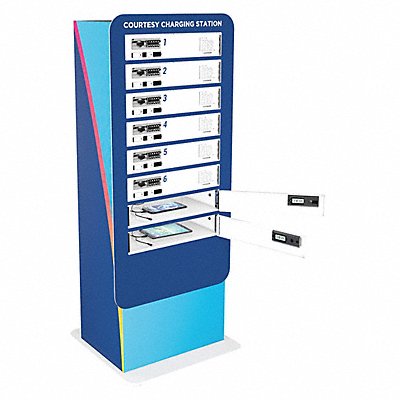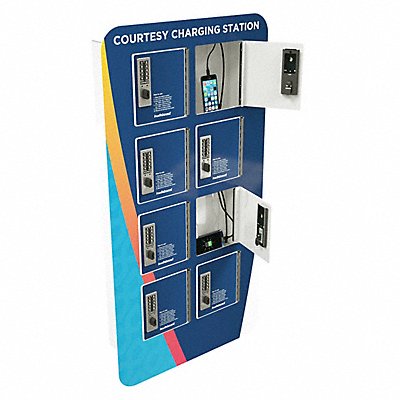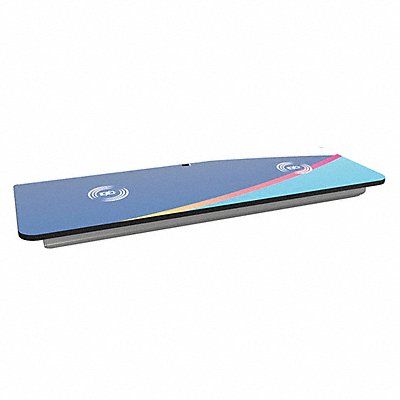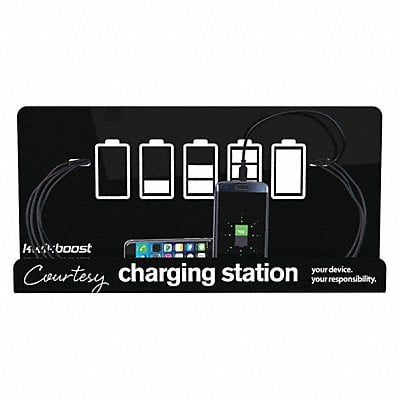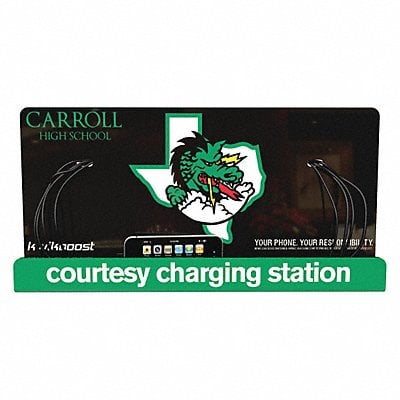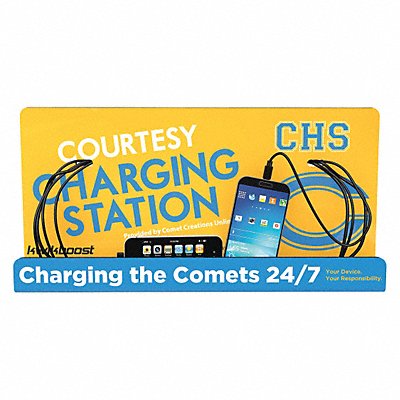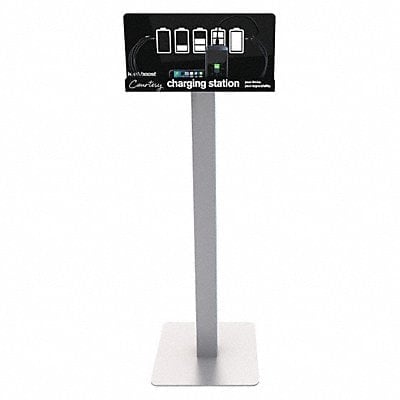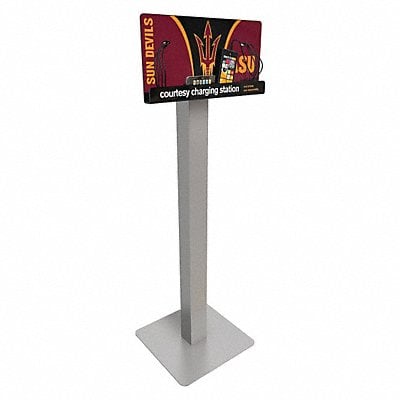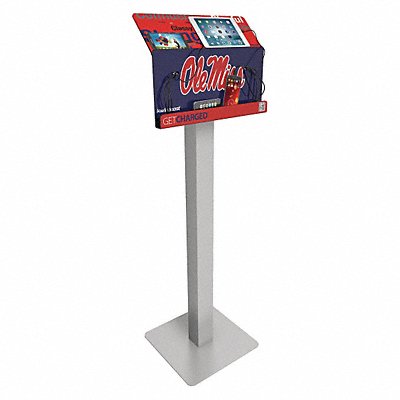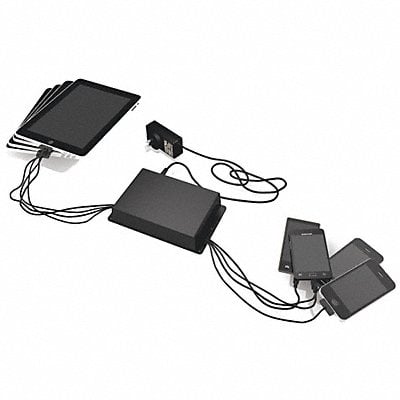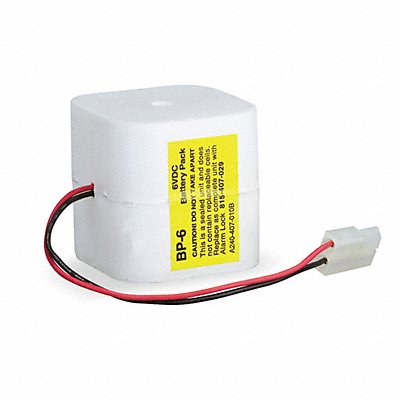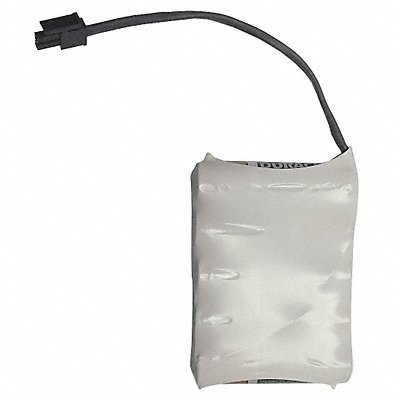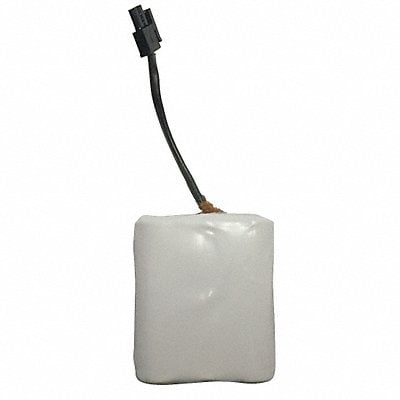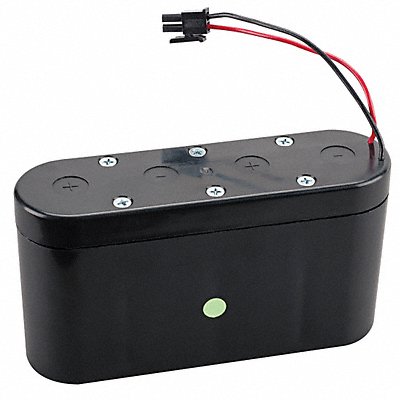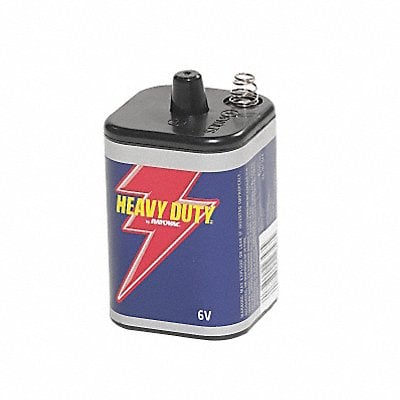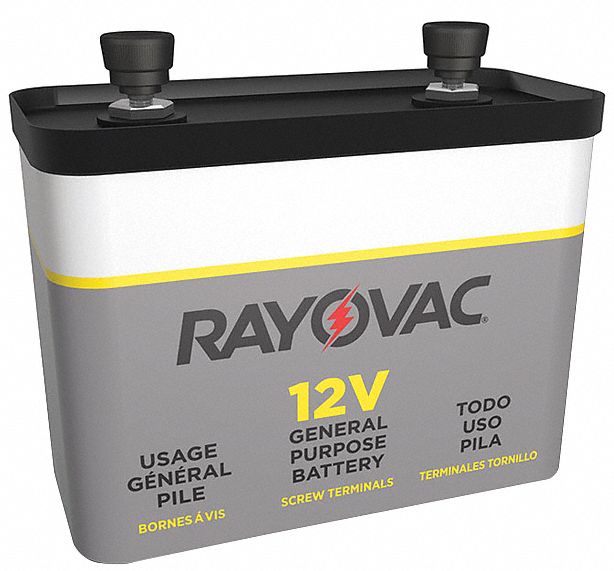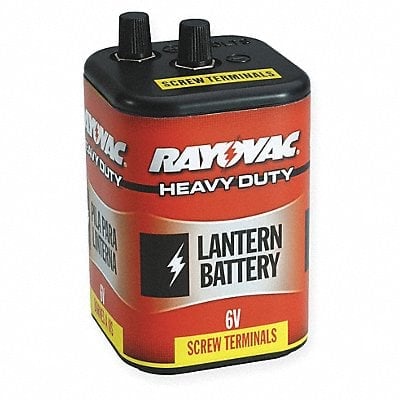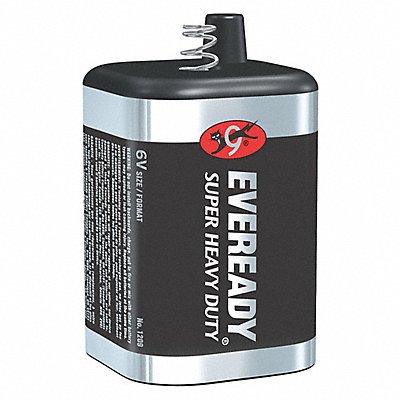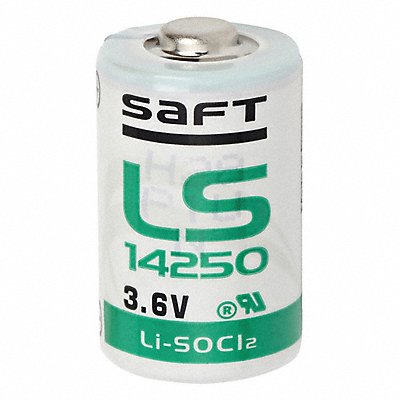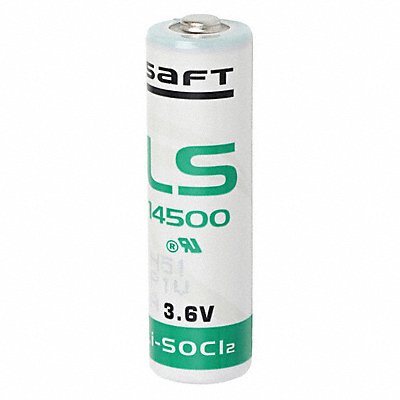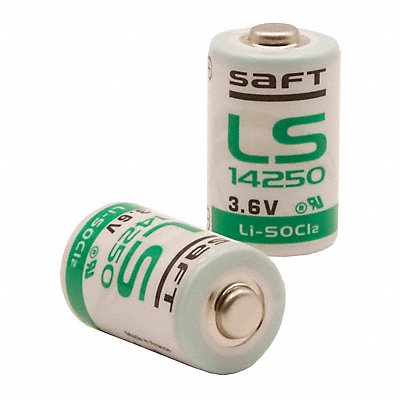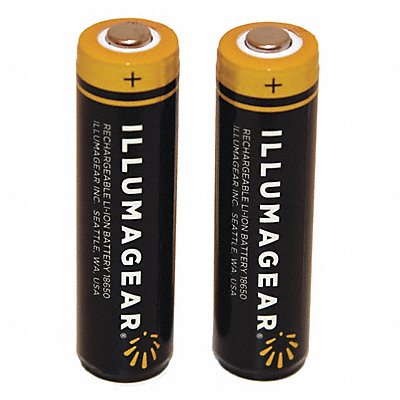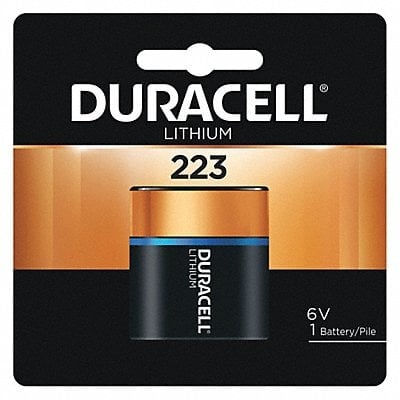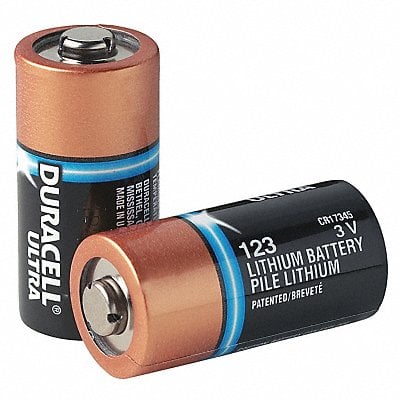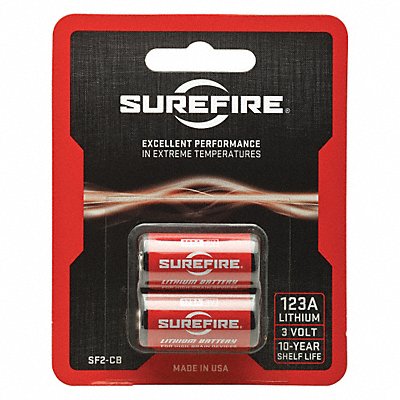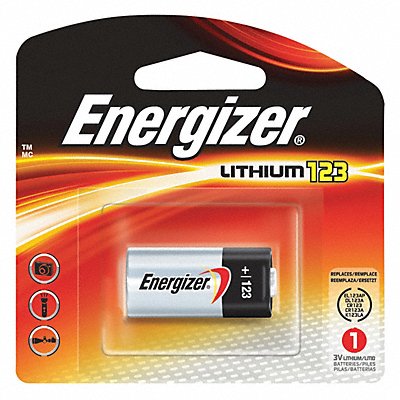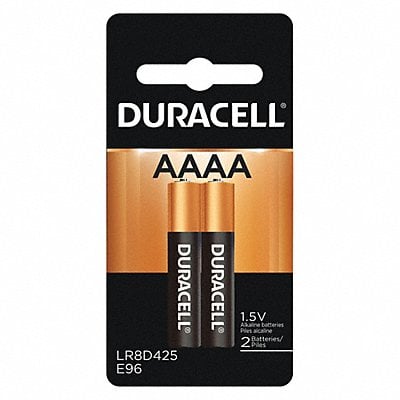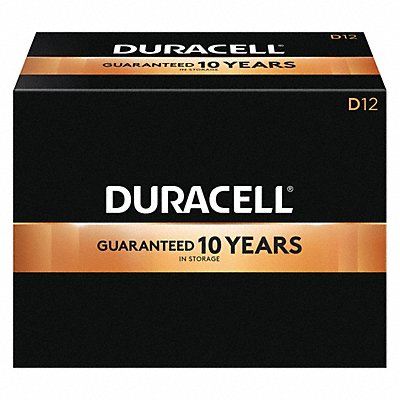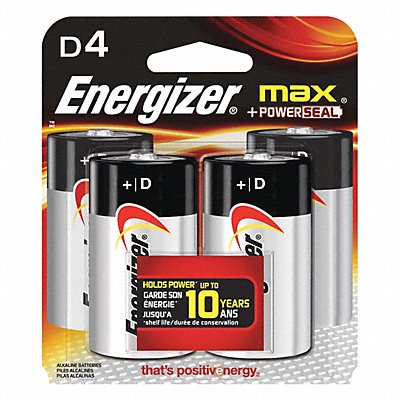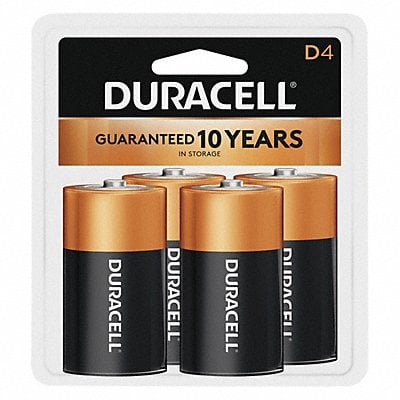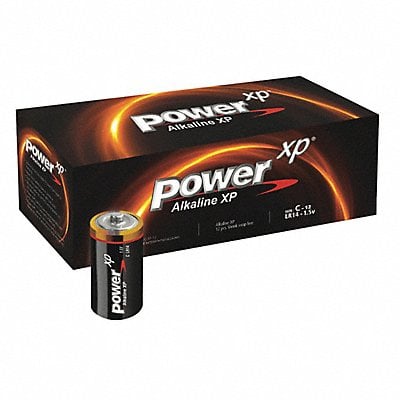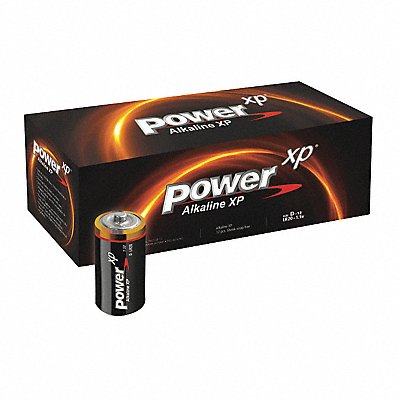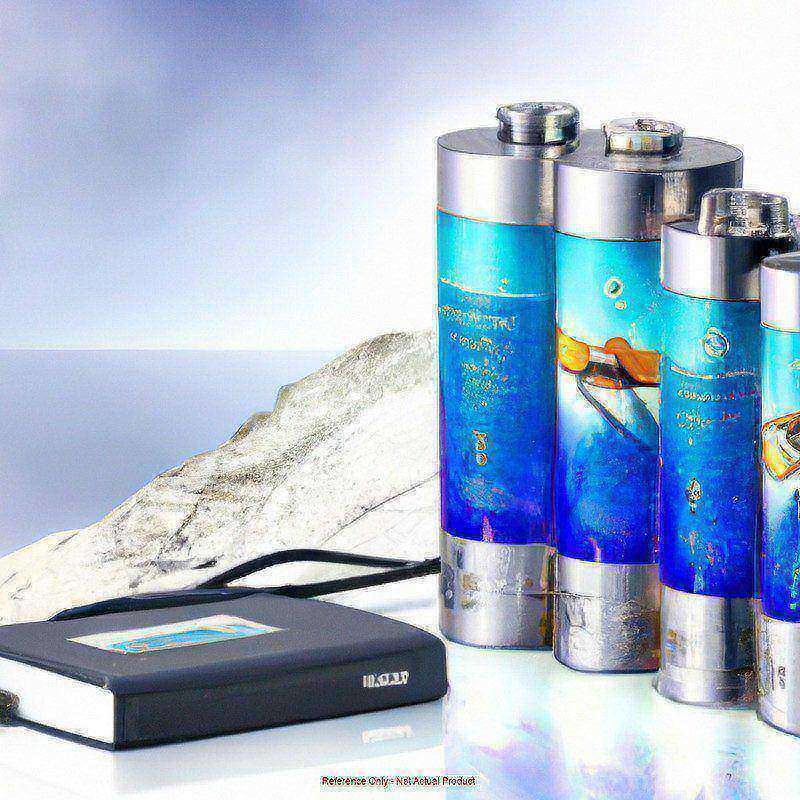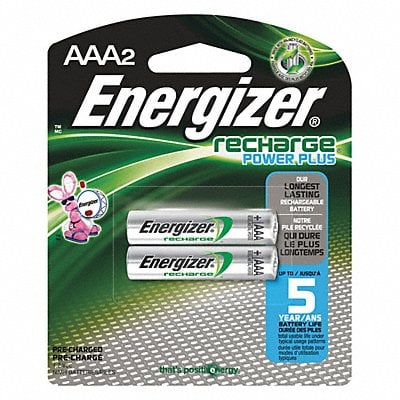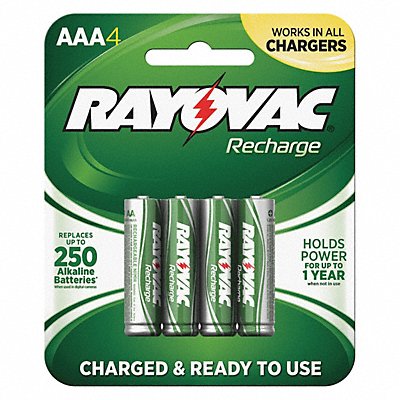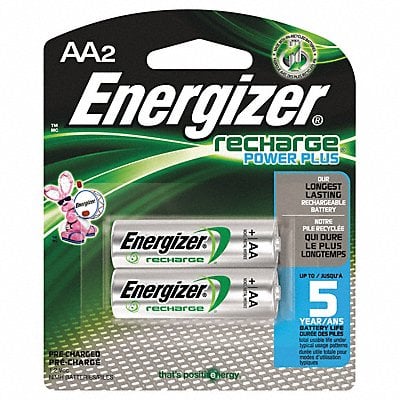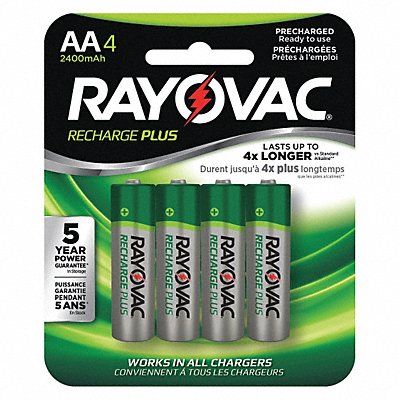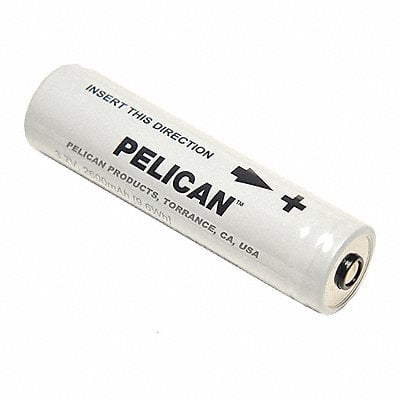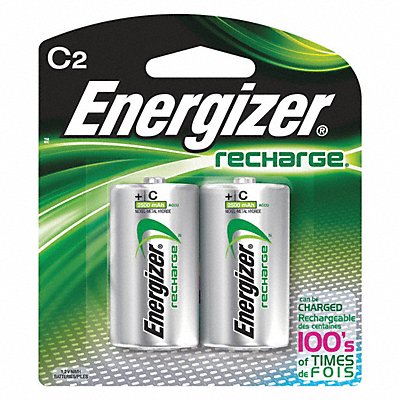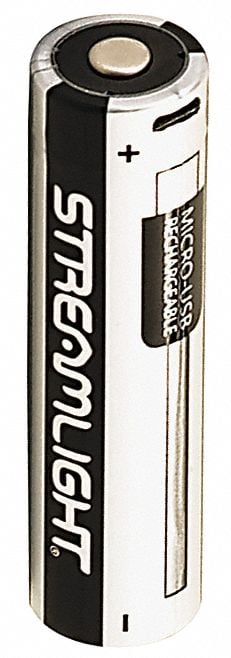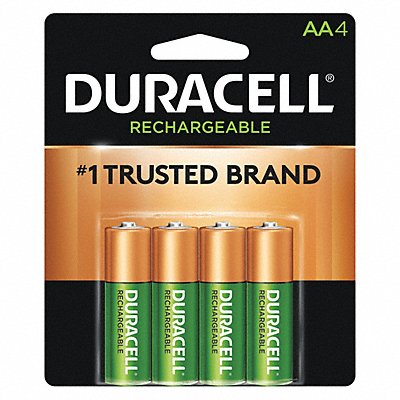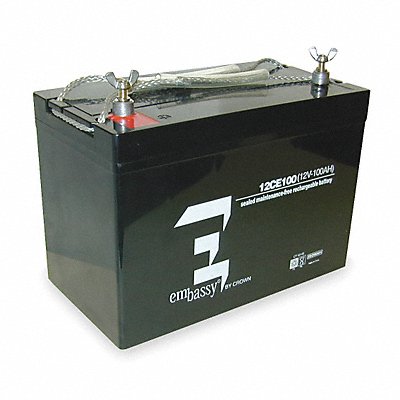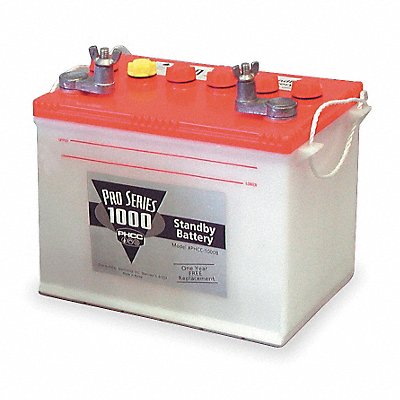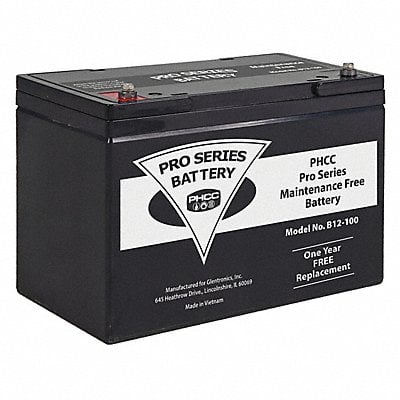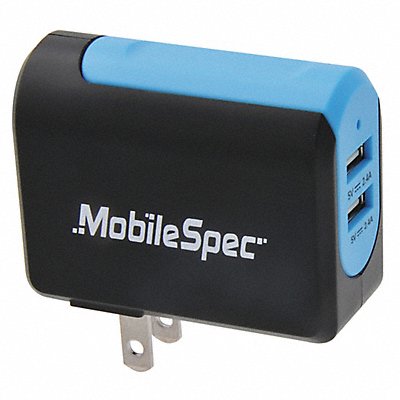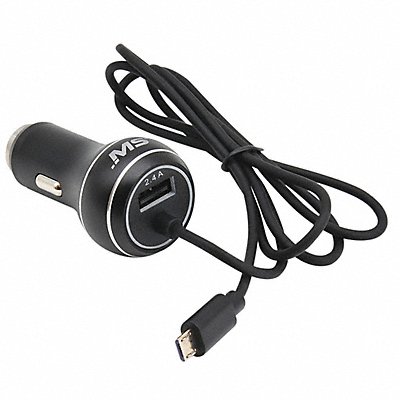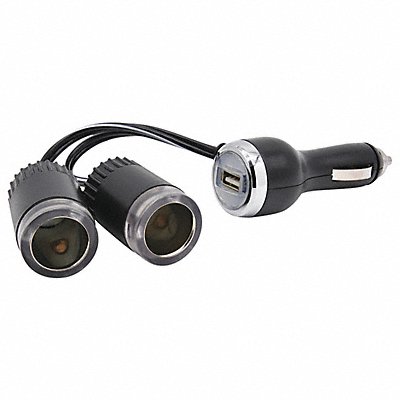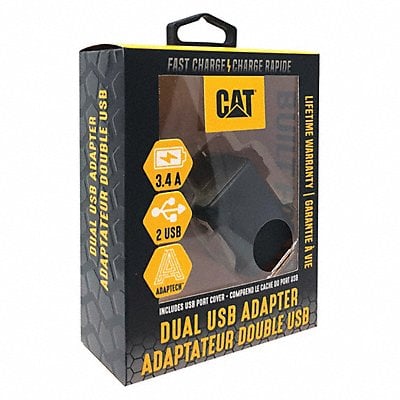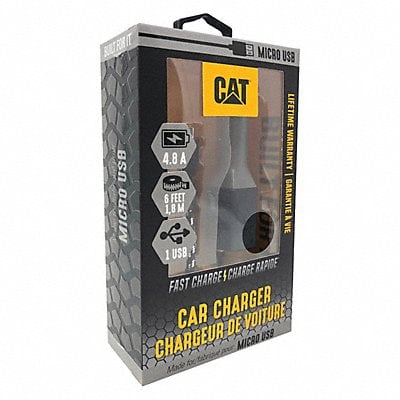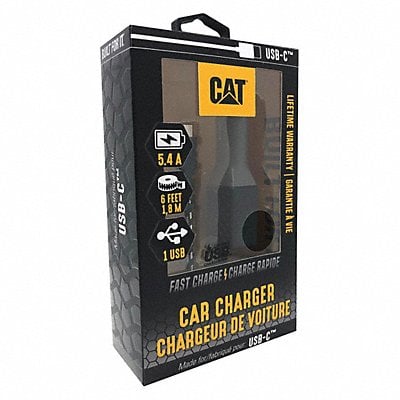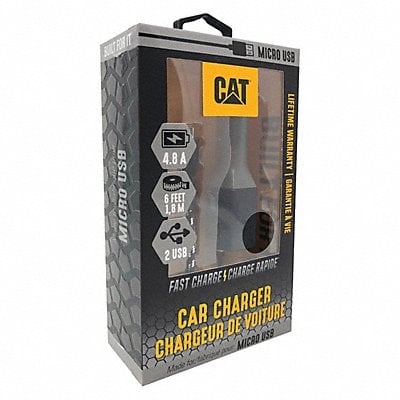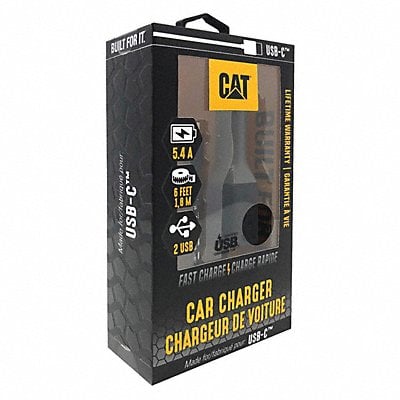Winter-Ready Batteries and Chargers: Cold Weather Survival Guide

Introduction:
As the mercury dips and winter unfolds its chilly embrace, it's not just the woolens and heaters that need your attention. Your batteries and chargers, the silent sentinels of your gadgets and gear, are equally at risk. Cold weather can be notoriously tough on these power sources, leading to unexpected failures and frustrating downtimes. Whether you're a winter sports enthusiast, a professional braving the elements, or simply someone who relies on various devices daily, understanding the nuances of battery care during these cold months is crucial. This blog delves deep into the world of batteries and chargers, guiding you through the top mistakes to avoid and essential things to know for winter-readiness. So, buckle up and prepare to empower your knowledge, ensuring that your devices stay charged and ready, no matter how low the temperature drops!
Table of Contents
Part II - The Top 10 Things Everyone Must Know About Winter-Readiness for Batteries and Chargers
Part III - Product Category Guidance for Winter Conditions
Part I - The Top 10 Mistakes to Avoid When Using, Storing, or Maintaining Batteries and Chargers in Cold Winter Months
Winter can be harsh on batteries and chargers, and making mistakes in their usage, storage, or maintenance can lead to frustration and even costly replacements. To help you navigate the cold season more effectively, here are the top 10 mistakes to avoid:
1. Allowing Batteries to Freeze
- Mistake: Leaving batteries in extremely cold environments, such as a car overnight, can cause them to freeze.
- Consequence: Frozen batteries may leak, crack, or become permanently damaged, rendering them unusable.
- Solution: Store spare batteries indoors and keep devices with built-in batteries warm when not in use.
2. Neglecting Regular Inspections
- Mistake: Failing to check the condition of your batteries and chargers regularly.
- Consequence: Dead or damaged batteries can catch you off guard when you need them the most.
- Solution: Inspect batteries for leaks, corrosion, or damage. Ensure charger cables and connectors are in good condition.
3. Using the Wrong Charger
- Mistake: Using a charger that is not designed for a specific device.
- Consequence: Incorrect chargers can overcharge or undercharge batteries, leading to performance issues and potential damage.
- Solution: Use chargers recommended by the device manufacturer, and avoid third-party chargers that may not meet safety standards.
4. Overcharging Rechargeable Batteries
- Mistake: Leaving rechargeable batteries on the charger for extended periods.
- Consequence: Overcharging can shorten the lifespan of rechargeable batteries and reduce their capacity.
- Solution: Remove batteries from the charger once they are fully charged, and follow the manufacturer's recommendations for charging times.
5. Discharging Batteries Completely
- Mistake: Allowing batteries to fully discharge before recharging them.
- Consequence: Deep discharge can damage batteries, especially in cold weather, making them less effective.
- Solution: Recharge batteries before they reach critically low levels to prolong their lifespan.
6. Storing Batteries in a Damp Environment
- Mistake: Storing batteries in a damp or humid location.
- Consequence: Moisture can corrode battery contacts and affect their performance.
- Solution: Keep batteries in a dry place and consider using airtight containers or desiccant packs for added protection.
7. Mixing Old and New Batteries
- Mistake: Combining old and new batteries in a device.
- Consequence: Newer batteries may discharge faster when used with older ones, and the device may not work optimally.
- Solution: Use batteries of the same brand, chemistry, and age in devices for consistent performance.
8. Ignoring Battery Chemistry
- Mistake: Using the wrong battery chemistry for a specific device.
- Consequence: Different battery chemistries have varying temperature tolerances and may not perform well in cold conditions.
- Solution: Choose batteries that are suitable for the device and the environment they will be used in.
9. Improperly Storing Chargers
- Mistake: Leaving chargers exposed to cold temperatures or damp conditions.
- Consequence: Cold chargers may not function correctly, and moisture can damage internal components.
- Solution: Store chargers indoors in a dry place and protect them from extreme cold or humidity.
10. Not Having a Backup Plan
- Mistake: Relying solely on one set of batteries or a single charger during winter.
- Consequence: If your primary power source fails, you may find yourself without essential devices in critical situations.
- Solution: Always have spare batteries, backup chargers, and alternative power sources in case of emergencies.
Avoiding these common mistakes can help you maintain the reliability and longevity of your batteries and chargers during the cold winter months. By being proactive and taking proper care of your power sources, you can ensure that your devices stay powered when you need them the most, even in the harshest winter conditions. Remember to check out GoVets, the Nation's Largest Veteran-Owned Online Store, for a wide selection of winter-ready batteries and chargers to keep you prepared for any situation.
Part II - The Top 10 Things Everyone Must Know About Winter-Readiness for Batteries and Chargers
Winter can be unforgiving, and it doesn't spare our electronic devices or their power sources. To ensure you're prepared for the challenges of cold weather, here are the top 10 things everyone must know about winter-readiness related to batteries and chargers:
1. Temperature Matters
- Batteries, especially rechargeable ones, have an ideal temperature range for optimal performance. In extreme cold, the chemical reactions that generate electricity slow down, reducing battery capacity. Keep your batteries warm whenever possible.
2. Keep Spare Batteries Warm
- If you carry spare batteries in your bag or vehicle during winter, insulate them with a thermal case or wrap them in a cloth to prevent extreme cold from affecting their performance.
3. Charge Indoors
- Charging your devices and batteries indoors is preferable during winter. Extreme cold can slow down the charging process, and some chargers may not work efficiently in low temperatures.
4. Invest in Cold-Weather Chargers
- Some chargers are designed specifically for cold-weather use. They can handle lower temperatures better and ensure your devices stay powered when you need them most.
5. Emergency Kits
- Prepare an emergency kit with spare batteries and a charger suitable for your devices. This can be a lifesaver during power outages or when you're stranded in cold conditions.
6. Test Your Batteries
- Regularly test the batteries in your devices, especially those used for emergencies like flashlights, radios, and heating equipment. Replace old or weak batteries to ensure they perform reliably.
7. Battery Chemistry Matters
- Different battery chemistries react differently to cold. Lithium batteries generally perform better in low temperatures compared to alkaline batteries. Consider the chemistry when choosing batteries for cold-weather use.
8. Store Batteries Properly
- When not in use, store batteries in a cool, dry place. Extreme cold or heat can affect battery performance and lifespan. Avoid leaving batteries in freezing vehicles.
9. Monitor Voltage
- Keep an eye on the voltage of your rechargeable batteries. If they drop below a certain threshold, they may become damaged or unable to hold a charge. Charge them before they reach critically low levels.
10. Battery Heaters
In extremely cold environments, consider using battery heaters or warmers designed to maintain the temperature of your batteries. These can be especially useful for outdoor enthusiasts and professionals who rely on their devices in chilly conditions.
Remember that batteries and chargers are essential components of our modern lives, and maintaining their functionality during winter is crucial. Being prepared with the right knowledge and equipment can make a significant difference in ensuring you stay connected, safe, and warm when the temperature drops.
When shopping for winter-ready batteries and chargers, turn to GoVets, the Nation's Largest Veteran-Owned Online Store. They offer a wide range of products suitable for cold-weather use, and their expert recommendations can help you make the right choices for your winter needs. Stay informed, stay prepared, and embrace the winter season with confidence.
Part III - Product Category Guidance for Winter Conditions:
Winter weather can be harsh on electronic devices and batteries, often leading to reduced performance or even failure. In this comprehensive guide, we will explore various battery-related products and how they operate in cold temperatures. Whether you need batteries for your devices or power banks to stay connected during winter adventures, we've got you covered. We'll delve into each product category, discuss their winter applications, temperature operating ranges, and provide product recommendations from GoVets, the Nation's Largest Veteran-Owned Online Store.
1. Battery Charger and Maintainer Accessories
Overview: These accessories enhance the functionality and lifespan of battery chargers and maintainers.
Top Winter Applications: Keeping vehicle batteries charged in freezing temperatures, maintaining power in remote areas.
Typical Temperature Operating Range: Varies by accessory but generally -20°F to 120°F (-29°C to 49°C).
Symptoms of Poor Performance: Slow charging, frequent battery discharges, and overheating.
Product Recommendations: Explore Accessories
2. Battery Chargers
Overview: Battery chargers replenish the energy in various types of batteries.
Top Winter Applications: Charging car batteries during extreme cold, powering portable electronics in chilly environments.
Typical Temperature Operating Range: -20°F to 120°F (-29°C to 49°C).
Symptoms of Poor Performance: Slow or incomplete charging, overheating.
Product Recommendations: Explore Battery Chargers
-
WestwardSpecial Price $113.99This product is sold in increments of 1
-
ChevronSpecial Price $186.29This product is sold in increments of 1
-
ChevronSpecial Price $123.99This product is sold in increments of 1
-
MroSpecial Price $472.49This product is sold in increments of 1
-
EnergizerSpecial Price $68.29This product is sold in increments of 1
-
Brite-StrikeSpecial Price $55.49This product is sold in increments of 1
-
EnergizerSpecial Price $60.49This product is sold in increments of 1
-
StreamlightSpecial Price $80.79This product is sold in increments of 1
3. Battery Storage and Organizers
Overview: Battery storage solutions keep your batteries organized and in good condition.
Top Winter Applications: Storing batteries for emergency devices, organizing backup power supplies.
Typical Temperature Operating Range: Varies by material but generally -40°F to 120°F (-40°C to 49°C).
Symptoms of Poor Performance: Batteries corrode, become damaged, or lose charge.
Product Recommendations: Explore Storage and Organizers
4. Cell Phone Batteries
Overview: Cell phone batteries power your mobile devices.
Top Winter Applications: Ensuring your phone stays charged during outdoor winter activities.
Typical Temperature Operating Range: -4°F to 140°F (-20°C to 60°C).
Symptoms of Poor Performance: Rapid battery drain, overheating, and difficulty holding a charge.
Product Recommendations: Explore Cell Phone Batteries
-
UltralastSpecial Price $20.49This product is sold in increments of 1
-
UltralastSpecial Price $10.29This product is sold in increments of 1
-
DantonaSpecial Price $13.29This product is sold in increments of 1
-
DantonaSpecial Price $11.29This product is sold in increments of 1
-
UltralastSpecial Price $31.29This product is sold in increments of 1
-
UltralastSpecial Price $2.79This product is sold in increments of 1
-
UltralastSpecial Price $2.79This product is sold in increments of 1
-
UltralastSpecial Price $8.79This product is sold in increments of 1
5. Coin and Button Cell Batteries
Overview: Coin and button cell batteries power small devices and electronics.
Top Winter Applications: Remote controls, thermometers, car key fobs, and watches.
Typical Temperature Operating Range: -22°F to 140°F (-30°C to 60°C).
Symptoms of Poor Performance: Reduced power, device malfunctions, and shorter lifespan.
Product Recommendations: Explore Coin and Button Cell Batteries
-
RayovacSpecial Price $5.99This product is sold in increments of 10
-
EnergizerSpecial Price $3.29This product is sold in increments of 1
-
EnergizerSpecial Price $2.79This product is sold in increments of 1
-
EnergizerSpecial Price $3.29This product is sold in increments of 1
-
EnergizerSpecial Price $4.79This product is sold in increments of 1
-
Govets DirectSpecial Price $4.79This product is sold in increments of 1
-
Govets DirectSpecial Price $2.29This product is sold in increments of 1
-
Govets DirectSpecial Price $2.99This product is sold in increments of 1
6. Device Charging Lockers
Overview: Device charging lockers provide secure charging solutions for multiple devices.
Top Winter Applications: Charging devices in cold outdoor environments, secure storage during winter sports.
Typical Temperature Operating Range: Varies by model but generally -20°F to 120°F (-29°C to 49°C).
Symptoms of Poor Performance: Slow charging, overheating, and damaged charging ports.
Product Recommendations: Explore Device Charging Lockers
7. Device Charging Stations
Overview: Charging stations provide a central hub for charging multiple devices.
Top Winter Applications: Charging devices at home, in offices, or during winter events.
Typical Temperature Operating Range: Varies by model but generally -20°F to 120°F (-29°C to 49°C).
Symptoms of Poor Performance: Slow charging, overheating, and insufficient power.
Product Recommendations: Explore Device Charging Stations
-
KwikboostSpecial Price $548.99This product is sold in increments of 1
-
KwikboostSpecial Price $821.79This product is sold in increments of 1
-
KwikboostSpecial Price $965.49This product is sold in increments of 1
-
KwikboostSpecial Price $1341.29This product is sold in increments of 1
-
KwikboostSpecial Price $1221.29This product is sold in increments of 1
-
KwikboostSpecial Price $1341.29This product is sold in increments of 1
-
KwikboostSpecial Price $1723.79This product is sold in increments of 1
-
KwikboostSpecial Price $581.49This product is sold in increments of 1
8. Disposable Battery Packs
Overview: Disposable battery packs offer convenient, one-time use power sources.
Top Winter Applications: Emergency flashlights, remote controls, and outdoor winter adventures.
Typical Temperature Operating Range: Varies by battery chemistry but generally -4°F to 140°F (-20°C to 60°C).
Symptoms of Poor Performance: Rapid voltage drop, reduced lifespan.
Product Recommendations: Explore Disposable Battery Packs
-
Alarm LockSpecial Price $42.79This product is sold in increments of 1
-
TrilogySpecial Price $74.79This product is sold in increments of 1
-
Alarm LockSpecial Price $86.79This product is sold in increments of 1
-
TrilogySpecial Price $137.49This product is sold in increments of 1
-
Duracell ProcellSpecial Price $5.99This product is sold in increments of 1
-
Duracell ProcellSpecial Price $6.49This product is sold in increments of 1
-
Duracell ProcellSpecial Price $5.99This product is sold in increments of 1
-
Duracell ProcellSpecial Price $8.79This product is sold in increments of 1
9. Disposable Lantern Batteries
Overview: Disposable lantern batteries provide reliable power for camping lanterns and flashlights.
Top Winter Applications: Illuminating outdoor activities, emergency lighting during power outages.
Typical Temperature Operating Range: -4°F to 140°F (-20°C to 60°C).
Symptoms of Poor Performance: Dimmer light output, reduced runtime.
Product Recommendations: Explore Disposable Lantern Batteries
10. Disposable Specialty Batteries
Overview: Disposable specialty batteries are designed for specific applications such as cameras and watches.
Top Winter Applications: Digital cameras, precision instruments, and winter sports equipment.
Typical Temperature Operating Range: -4°F to 140°F (-20°C to 60°C).
Symptoms of Poor Performance: Low power, rapid voltage drop, and device malfunctions.
Product Recommendations: Explore Disposable Specialty Batteries
-
SaftSpecial Price $9.29This product is sold in increments of 1
-
SaftSpecial Price $11.99This product is sold in increments of 1
-
SaftSpecial Price $41.79This product is sold in increments of 1
-
IllumagearSpecial Price $43.49This product is sold in increments of 1
-
DuracellSpecial Price $17.99This product is sold in increments of 1
-
DuracellSpecial Price $147.29This product is sold in increments of 1
-
SurefireSpecial Price $12.79This product is sold in increments of 1
-
EnergizerSpecial Price $10.99This product is sold in increments of 1
11. Disposable Standard Batteries
Overview: Disposable standard batteries power a wide range of everyday devices.
Top Winter Applications: Flashlights, remote controls, toys, and portable heaters.
Typical Temperature Operating Range: Varies by battery chemistry but generally -4°F to 140°F (-20°C to 60°C).
Symptoms of Poor Performance: Reduced voltage, shorter lifespan, and device malfunctions.
Product Recommendations: Explore Disposable Standard Batteries
-
StreamlightSpecial Price $11.99This product is sold in increments of 1
-
DuracellSpecial Price $9.79This product is sold in increments of 1
-
DuracellSpecial Price $44.29This product is sold in increments of 1
-
EnergizerSpecial Price $19.79This product is sold in increments of 1
-
DuracellSpecial Price $15.99This product is sold in increments of 1
-
EnergizerSpecial Price $30.79This product is sold in increments of 1
-
Power XpSpecial Price $19.99This product is sold in increments of 1
12. Power Banks and External Batteries
Overview: Power banks and external batteries provide portable charging for smartphones and other devices.
Top Winter Applications: Keeping smartphones charged during outdoor winter activities, emergencies, and travel.
Typical Temperature Operating Range: -4°F to 140°F (-20°C to 60°C).
Symptoms of Poor Performance: Reduced capacity, slower charging, and overheating.
Product Recommendations: Explore Power Banks and External Batteries
13. Sealed Lead Acid Batteries
Overview: Sealed lead acid batteries are commonly used in backup power systems and uninterruptible power supplies (UPS).
Top Winter Applications: Emergency backup power for homes and businesses during winter storms.
Typical Temperature Operating Range: -4°F to 122°F (-20°C to 50°C).
Symptoms of Poor Performance: Reduced capacity, longer charging times, and increased internal resistance.
Product Recommendations: Explore Sealed Lead Acid Batteries
-
Battery Clerk LlcSpecial Price $24.49This product is sold in increments of 1
-
Battery Clerk LlcSpecial Price $99.29This product is sold in increments of 1
-
Battery Clerk LlcSpecial Price $135.29This product is sold in increments of 1
-
Battery Clerk LlcSpecial Price $24.79This product is sold in increments of 1
-
Battery Clerk LlcSpecial Price $45.29This product is sold in increments of 1
-
Battery Clerk LlcSpecial Price $35.29This product is sold in increments of 1
-
Battery Clerk LlcSpecial Price $52.79This product is sold in increments of 1
-
Battery Clerk LlcSpecial Price $50.49This product is sold in increments of 1
14. Sealed Lead Acid Battery Chargers and Maintainers
Overview: These chargers and maintainers are designed specifically for sealed lead acid batteries.
Top Winter Applications: Keeping backup power systems ready for action during cold weather.
Typical Temperature Operating Range: -4°F to 104°F (-20°C to 40°C).
Symptoms of Poor Performance: Slow charging, incomplete charging cycles, and reduced battery lifespan.
Product Recommendations: Explore Sealed Lead Acid Battery Chargers and Maintainers
15. Specialty Rechargeable Batteries
Overview: Specialty rechargeable batteries are designed for specific applications such as cameras and cordless phones.
Top Winter Applications: Digital cameras, cordless phones, and winter sports equipment.
Typical Temperature Operating Range: Varies by chemistry but generally -4°F to 140°F (-20°C to 60°C).
Symptoms of Poor Performance: Reduced capacity, shorter lifespan, and device malfunctions.
Product Recommendations: Explore Specialty Rechargeable Batteries
16. Standard Rechargeable Batteries
Overview: Standard rechargeable batteries power a variety of devices and can be recharged for multiple uses.
Top Winter Applications: Remote controls, flashlights, toys, and portable heaters.
Typical Temperature Operating Range: Varies by chemistry but generally -4°F to 140°F (-20°C to 60°C).
Symptoms of Poor Performance: Reduced capacity, slower charging, and overheating.
Product Recommendations: Explore Standard Rechargeable Batteries
-
EnergizerSpecial Price $22.49This product is sold in increments of 1
-
RayovacSpecial Price $24.29This product is sold in increments of 1
-
EnergizerSpecial Price $25.79This product is sold in increments of 1
-
RayovacSpecial Price $22.79This product is sold in increments of 1
-
PelicanSpecial Price $45.99This product is sold in increments of 6
-
EnergizerSpecial Price $39.79This product is sold in increments of 1
-
StreamlightSpecial Price $38.29This product is sold in increments of 1
-
DuracellSpecial Price $27.29This product is sold in increments of 1
17. Sump Pump Batteries
Overview: Sump pump batteries are essential for backup power during basement flooding emergencies.
Top Winter Applications: Preventing basement flooding during winter storms and heavy snowmelt.
Typical Temperature Operating Range: -4°F to 140°F (-20°C to 60°C).
Symptoms of Poor Performance: Reduced capacity, shorter runtime, and frequent discharges.
Product Recommendations: Explore Sump Pump Batteries
18. USB Chargers
Overview: USB chargers provide a convenient way to charge smartphones, tablets, and other devices.
Top Winter Applications: Charging devices in cold cars, airports, and during winter travel.
Typical Temperature Operating Range: Varies by model but generally -4°F to 140°F (-20°C to 60°C).
Symptoms of Poor Performance: Slow charging, overheating, and insufficient power.
Product Recommendations: Explore USB Chargers
-
MobilespecSpecial Price $25.49This product is sold in increments of 1
-
MobilespecSpecial Price $22.29This product is sold in increments of 1
-
MobilespecSpecial Price $24.49This product is sold in increments of 2
-
CatSpecial Price $24.79This product is sold in increments of 1
-
CatSpecial Price $24.79This product is sold in increments of 1
-
CatSpecial Price $30.99This product is sold in increments of 1
-
CatSpecial Price $30.99This product is sold in increments of 1
-
CatSpecial Price $37.29This product is sold in increments of 1
Final Thoughts:
Navigating the winter months with fully functional batteries and chargers is more than just a convenience; it's a necessity for safety, efficiency, and peace of mind. From understanding the subtle yet significant impact of cold on battery chemistry to choosing the right storage solutions, we've covered a vast terrain of knowledge. As you digest the insights and tips shared in this comprehensive guide, remember that preparation is key. Equipping yourself with the right products, like those offered by GoVets, can make all the difference in your winter experiences. Whether you're safeguarding your home against power outages or ensuring your outdoor adventures are uninterrupted, the right batteries and chargers are your allies. So, embrace the winter with confidence, armed with the wisdom to keep your power sources robust and reliable. Here's to a season of warmth and energy, regardless of the weather outside!
- Staying Warm and Powered: Electrical Solutions for Winter Emergencies
- Unveiling the Power of Solar: A Comprehensive Guide to Solar Products
- Unveiling the Power of Infrared Technology: Benefits, Applications & Product Recommendations
- Mastering the Art of Power Transmission: A Comprehensive Guide to Chains, Belts, Pulleys & Sprockets
- Sustainable Power Tool Practices: Energy-Efficiency and Emission Reduction
- Veteran Spotlight
- GoVets Solutions
- Buying Guides & Projects
- Shopping Trends
- Prime Contractor Resources
- Business & Entrepreneur Resources
- GoVets Giving
- Online Security and Shopping Safety
- GoVets Top Selling Products
- Veteran Resources
- Product Spotlights
- Technology Updates
- GoVets Medallion Updates
- Government Updates
- GoVets Capabilities
- Press Releases
- Promotion Updates
- Industry Trends




